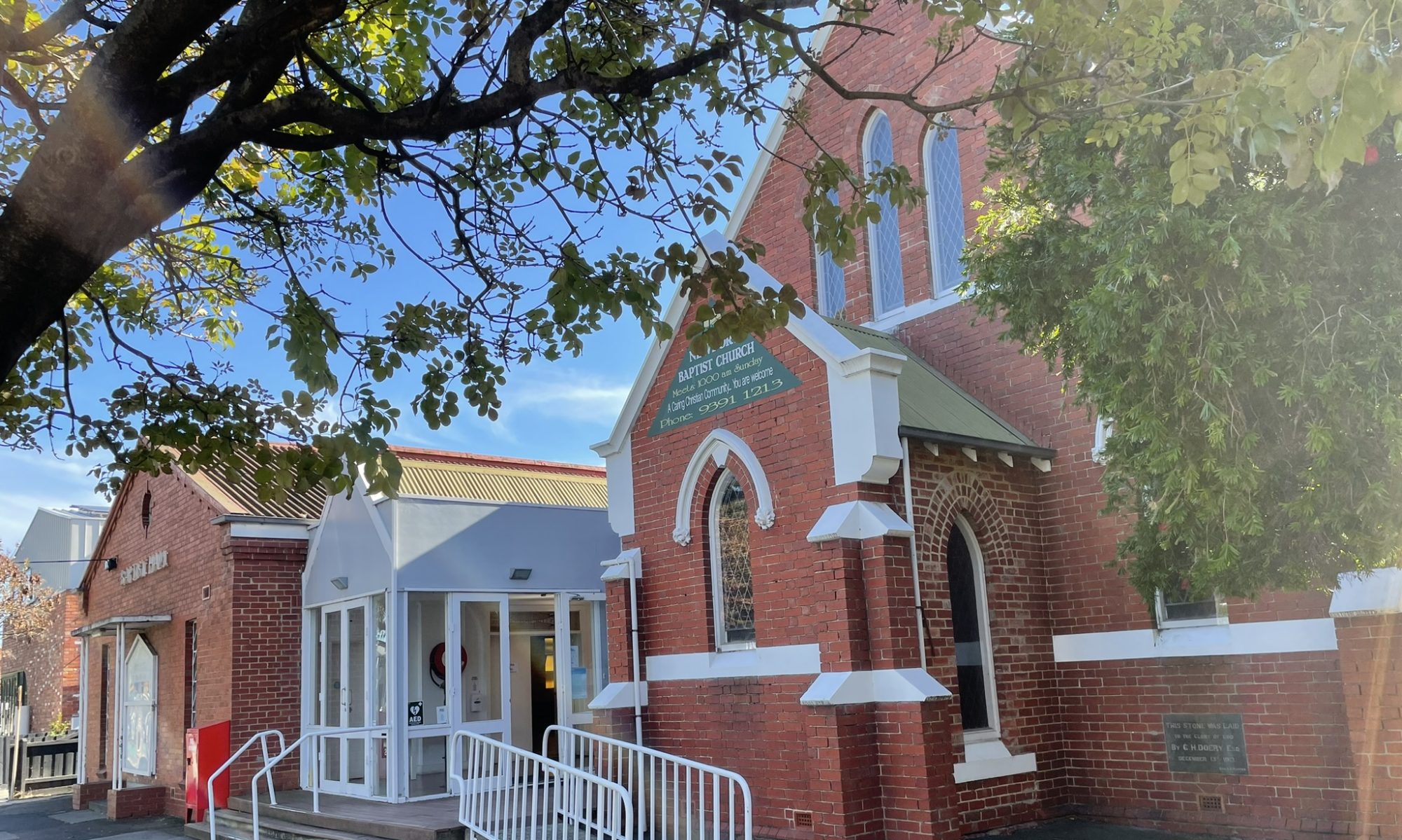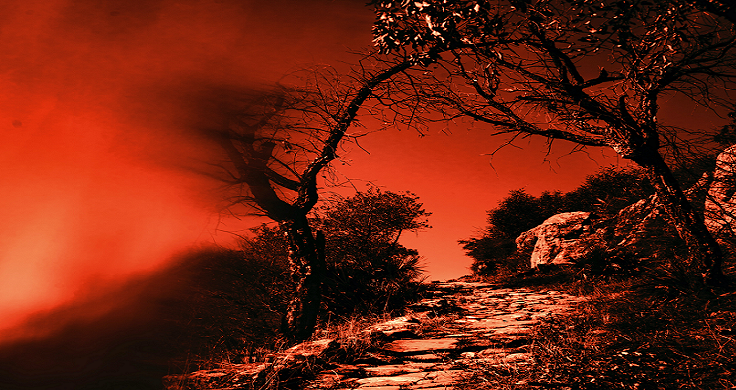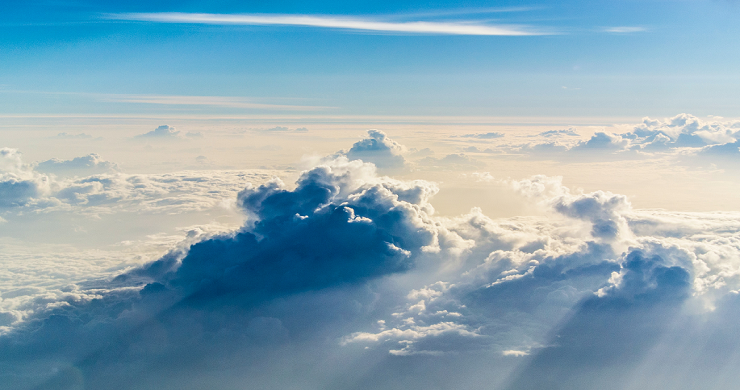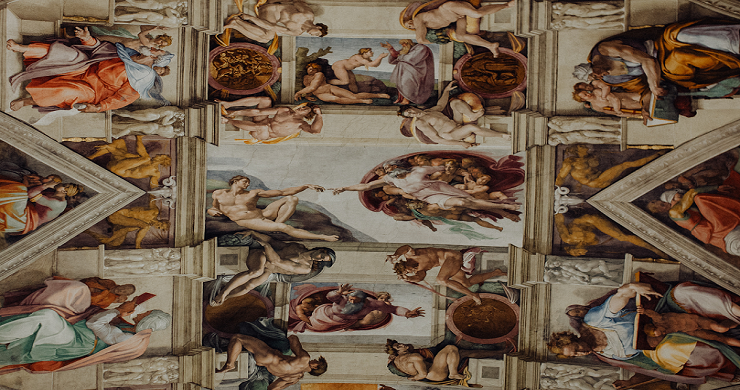Asking the Hard Questions: Hell
Matthew 25:31-46
NBC 5/03/23
Today we come to the end of our Hard Questions series, and we are finishing with a doozy: we’re going to spend the next 20 minutes or so talking about hell, which is a topic that is not preached about too often nowadays. I want to assure you that this message definitely isn’t going to be all hellfire and brimstone with lots of finger-pointing and judgement. But rather what I’m hoping for is that it will be a conversation around the history of what we call hell and some ideas about what it might be.

Feel Free To Disagree
Once again, feel free to disagree with what I share with you today, but I do ask that you know why. These hard question messages about creation, the fall, heaven and hell have been opportunities for us to nail down our own current theological understandings on these subjects – to explore and ask ourselves the question of why we believe what we believe, which could very likely be different to the person sitting next to you.
There are a lot of movies and TV shows that have been made about hell or the devil which can colour our understanding of it. Satan is either a cheeky lad or a sneaky fiend or a terrifying character and hell is a great place to go if you want to have fun for eternity (better than playing harps and being goodie-goodies) or it is a place of horrific mental and physical torment and everything in between.
Hell
Hell. It’s been used as a swear word frowned upon in church circles, even if you hit your thumb with a hammer.
It’s been used to describe horrific events on earth such as the conditions soldiers faced in WWI.
Firefighters have described fighting deadly Australian bushfires as staring into the very jaws of hell.
For centuries it has been used as a weapon of fear: if you do something wrong, you’ll go to hell. It has helped keep children, both Catholic and protestant, in line – if you sin, you’ll go to hell, and if it’s a really bad sin a policeman will come and put you in jail for good measure.
Some teaching on hell has caused heartache for people whose loved ones have died at their own hand when they have been told that that person is going to hell.
Sadly, it has been weaponised more recently by – dare I say it – US right-wing, fundamentalist Christians. When they protest against people or groups or political decisions that they don’t agree with or don’t like. When I did a Google image search for signs that Christians use about hell, some were so terrible, so judgemental and horrific that I felt sick to the stomach.
Here At Newport Baptist Church
So, as the community of Christ here at NBC, let’s start our exploration of hell without fear-mongering or judgement.
In The Old Testament
We’ll start in the Old Testament with this now familiar ancient picture of the world as a roofed dome. The heavens above the dome were where God dwelt and the earth inside the dome was where humans dwelt. The sun, moon and stars were stuck on the roof of the dome. A bit like the glow-in-the-dark stars that kids of the 80’s put on their ceilings.
Under the earth was a physical place called Sheol somewhere within the pillars of the earth.
As we begin our journey into hell – no, that’s not what I mean – as we begin exploring hell starting with the Old Testament it’s important to note that the word hell isn’t actually mentioned in the Old Testament. The place of the dead was called Sheol. So, what and where exactly was Sheol?
The Jewish Encyclopaedia gives us some really helpful insights.
Sheol
Sheol represented the place where everyone who died was believed to go. It was a physical place that was deep underneath the earth; it marked the point which was the greatest possible distance from heaven. When a person died, they descended into it or were made to go down into it. Sometimes though, the living were hurled into Sheol before they naturally died. In Numbers 23:32 we read that the earth opened its mouth and swallowed a group of men who were plotting against Moses and planning a takeover, along with their families.
Sheol in Job 10 is written about as a land of darkness and deep shadow; and elsewhere in Job, Psalms and Isaiah it is described as a place with gates. We find in Proverbs 27 chambers or divided compartments in there. In Isaiah and Ezekiel, we read that there are the furthest corners in this underworld.
So, Sheol was a place where the dead met without distinction of rank or condition—the rich and the poor, the pious and the wicked, the old and the young, the master and the slave. The dead merely existed and silence reigned supreme. In this realm of silence, God was not praised. In short, Sheol was a horrible, dreary, dark, disorderly land where return from it was not expected.
King Saul
And yet in 1 Samuel 28, we read that a troubled King Saul consulted a medium to speak with the deceased prophet Samuel. A rather grumpy Samuel appeared and asked the king: why have you disturbed me by bringing me up.
Samuel, the great prophet and a man who during his lifetime obeyed God and lived for God, wasn’t in some kind of heavenly paradise after dying but rather under the earth, in Sheol, seemingly resting. He spoke his words of condemnation against Saul. Then returned to his resting place beneath the earth. Knowing that the next day Saul and his sons would be joining him.
So how did we move from a place of shadowy rest and existence after death in the Old Testament to a place of fire and eternal torment in the New Testament?
Alexander the Great
One significant historical event happened during this intertestamental time – the 400 years or so between the Old and the New Testaments. In 332BC Alexander the Great, the famous Greek warrior, along with his army, overthrew and conquered the Persians who had occupied the region of the Middle East which included Judah. Gradually over three centuries, Jewish thought was influenced by Greek ideology, philosophy and mythology.
You may be surprised to know that the word hell is not mentioned in the original Greek writings of the New Testament. Rather it is a translation of three Greek words: Gehenna, Hades and Tartaros that happened in the 1611 version of the King James Bible.
17th-Century Translators
Understanding that, we can see how the 17th-century translators used the Old English word hel or helle which meant netherworld, the abode of the dead, infernal regions, and a place of torment for the wicked after death when talking about Gehenna, Hades or Tartaru. The Old English word hel or helle came from the Proto-Germanic haljō which meant the underworld.
Three Greek Words
Let’s have a brief look at these three Greek words.
Gehenna
The first we’ll look at is Gehenna. According to Jewish tradition, this word originates from ge-hinnom which means the valley of the son of Hinnom which was located outside of the city walls of Jerusalem. This was the site where some Israelite people sacrificed their children by burning them to the local gods – Molech and Baal. These unspeakable actions were abhorrent to God and to righteous Jews.
Tradition says that this place outside of Jerusalem continued to have a sordid and awful history. It had been a site of mass graves for soldiers after wars were fought in the region. And long before Jesus came onto the scene, it had become Jerusalem’s garbage dump. All types of rubbish was dumped and burned there, including bodies of people who died in sin. Because of the rubbish and the bodies, it kept continually burning.
Hades
The second word that has been translated to hell is Hades. The term Hades, not surprisingly because of its centuries of influence, comes from Greek culture. Initially, it was used as a name for the god who had dominion over the realm of the dead. Later for the place itself, it was a place where all dead people resided. Early depictions of the afterlife in ancient Greece show or talk about Hades as a place where restless spirits of the dead lingered in an underground twilight existence. Homer’s Odyssey famously describes Hades as a place across a river at the end of the world. Requiring a guide and a long journey for the restless soul. In the Iliad, it’s a murky, damp place.
Tartarus
Our final word for hell is Tartarus which is found only once in the New Testament in Peter’s second letter. In Greek mythology, Tartarus was the deep abyss used as a dungeon of torment and suffering for the wicked and as the prison for the Titans. According to Plato’s Gorgias, Tartarus was the place where souls were judged after death and where the wicked received divine punishment.
In 2 Peter it is the place where angels who had sinned were cast and kept in chains.
Mythology
So, were Jesus and the apostles talking about mythology when they spoke about Gehenna, Hades and Tartarus?
No. They were speaking in a language that their listeners and readers would understand. Using imagery that would show the importance of their message. Is this imagery of eternal lakes of fire, of worms and snakes and gnashing of teeth literal? I don’t know.
Jesus was completing the story of eternal life. As we’ve discussed, hell (or the equivalent Greek words) is a thoroughly New Testament doctrine. Because it only makes complete sense once God’s gift of mercy and grace through the work of Jesus’ death and resurrection has been offered and is rejected.
Not God’s Plan
It’s not God’s plan for any person to be separated from him. From his love and from his good plans for eternal life. But it is God’s plan to give humanity the free will to decide what to do with his love and these good plans.
What we do now, in this lifetime has eternal consequences. And that is not just saying the sinner’s prayer. As we see in today’s Bible reading, what matters to God is how we treat those who are needy. Who are hungry. Who are in prison. Did you see that the sheep were as shocked about their deeds as the goats were? But Lord, when did we ever feed you, or visit you in prison or clothe you? Both sheep and goats asked the same question, and the answer was: when you did or didn’t do these things to the least of these. There’s a whole sermon there – but that’s for another day.
What we do in this lifetime has eternal consequences. Remember last week we were talking about not being whisked off to heaven when we die? But God sometime in the future recreate heaven and earth into a place of creation’s original beauty and perfection. We are given the opportunity to share in that for eternity.
Made in The Image of God
But when humans who have been made in the image of God say outright to God that we don’t want to acknowledge you as creator, as Lord in our lives. We don’t want to worship you and live the way you want us to by putting others before ourselves. By caring for the poor and loving the others. When we say we don’t want to be transformed more and more into the likeness of Jesus then we are basically saying to God that we don’t want to be made in his image anymore. We want to be made in our own image and we want to live as our own gods.
What we do in this lifetime has eternal consequences. Because when humans reject God in this way then what is God expected to do when we die? God respects the choices humans make. In my mind the decision to reject God and his love, mercy and grace is hell.
Is Hell Burning Lakes of Fire
Is hell burning lakes of fire and deep dark caverns of terror? I don’t know. What I do know is that what we do in this lifetime has eternal consequences. For me, hell is being cut off from God who is love and grace and community. Eternity without goodness, without community, without love – completely Godless – seems terrifying and tragic.
The Prodigal Son
We see a picture of the depth of God’s love for all of humanity in the familiar parable of the prodigal son. The boy demanded his share of his father’s estate and went off and lived his own life and wasted every cent. He came back to ask forgiveness which the father granted in ways the son could only ever imagine. This father should have shunned his son. Yet he opened his arms to him when the son decided to come back home. God’s love invites us to come back to him. To be welcomed by him no matter where we’ve been or what we’ve done.
The older brother who had stayed and worked hard on the farm was so jealous of this reckless brother and angry that he was accepted back into the family with such deep and unabandoned grace by their father. He refused to share in and celebrate the love, joy, and happiness of The Father. He would rather have seen his brother burn in hell.
Eternal Consequences
What we do in our lifetime has eternal consequences. Rather than waving placards at people we don’t agree with, let us do as Jesus said: love your enemies. Instead of judging people for their lifestyles, let’s ensure our lifestyle is in line with God’s will. Rather than looking down our noses at those who are doing it tough, let’s help them in practical ways of service.
What we do in our lifetime has eternal consequences – it’s a hell of a choice.
Invitation
Jesus said: I am the bread of life. All who come to me shall not hunger, and all who believe in me shall not thirst.
With Christians around the world and throughout the centuries, we gather around these symbols of bread and juice. Simple elements that speak of nourishment and transformation.
Final prayer
We give thanks, loving God, that you have refreshed us at your table.
We pray that you will continually strengthen our faith. Increase our love for one another and our service towards all we encounter.
As we have been fed by the seed that became grain, and then became bread, may we go out into the world to plant seeds of hope, love and service. Amen.
Benediction
As we leave today, let us remember that Jesus the washer of feet and the friend of sinners is our brother and our example. Therefore no lowly service towards another is beneath our dignity and no individual is unworthy of our concern and respect.
We go knowing that we cannot help everyone who is in trouble. But we can show God’s love through our service to some. Therefore, let us keep our eyes and our hearts open. So that we will recognise those in whom Jesus comes to us for mercy.
May the love of Jesus enfold you. The love of God encircle you and the fellowship of the Spirit enrich you. Now and evermore!
Amen!
Rev. Julie Hunt






